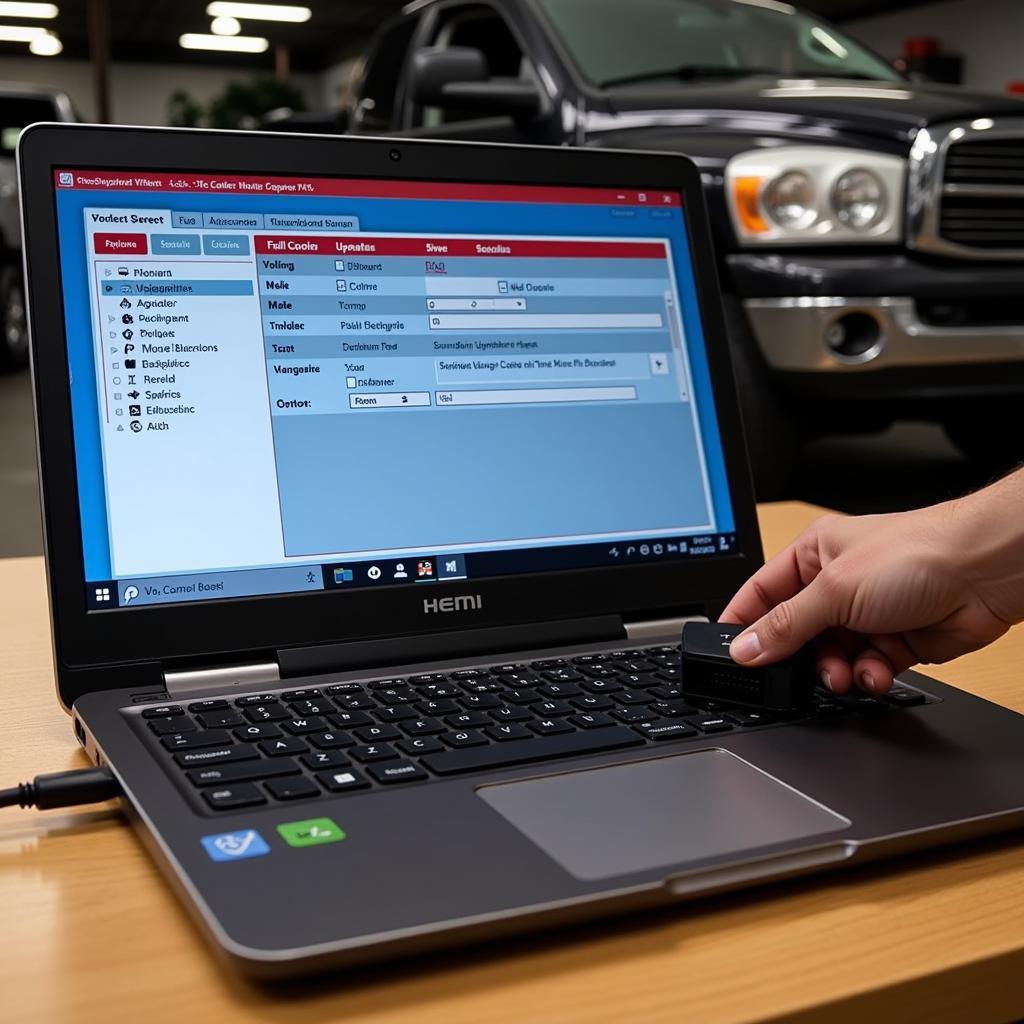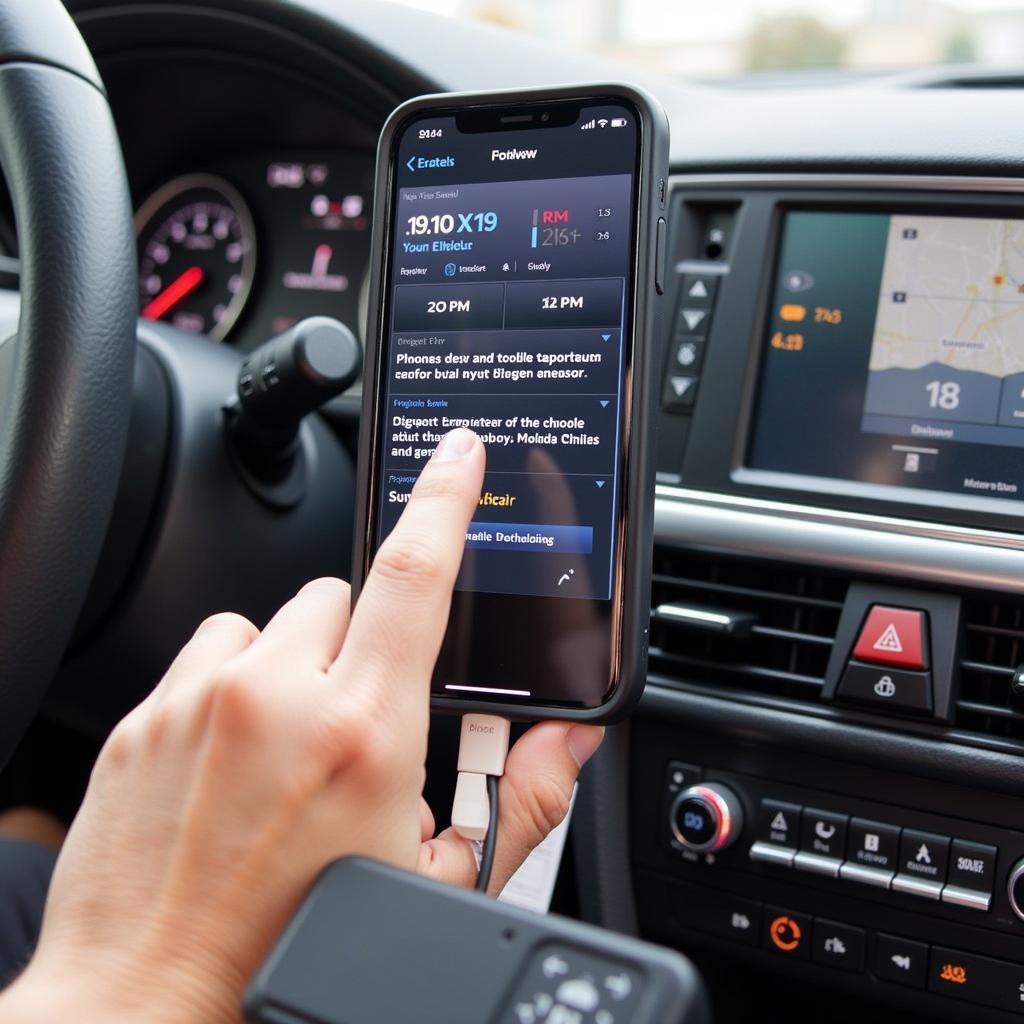A scan tool is used to retrieve valuable diagnostic information from a vehicle’s computer system. This information is crucial for identifying and resolving a wide range of automotive issues, from minor glitches to complex malfunctions. Whether you’re a seasoned mechanic or a car enthusiast looking to delve into DIY repairs, understanding the capabilities of a scan tool can significantly enhance your troubleshooting process.
Deciphering the Language of Your Car: How Scan Tools Work
Modern vehicles are equipped with onboard computers known as Electronic Control Units (ECUs). These ECUs continuously monitor various systems within your car, collecting data from sensors and regulating crucial functions like engine performance, emissions, and safety features. When a problem arises, the ECU stores a corresponding Diagnostic Trouble Code (DTC) in its memory.
This is where a scan tool comes into play. It acts as a bridge between your car’s computer and you, allowing you to communicate with the ECUs and access the stored DTCs. By plugging into the vehicle’s OBD-II port (usually located under the dashboard), the scan tool can retrieve these codes and display them in a readable format.
[image-1|scan-tool-connected-to-obd-port|Mechanic connecting a scan tool to a car’s OBD-II port| A close-up shot of a mechanic’s hand connecting a scan tool to the OBD-II port located under the dashboard of a car. The image highlights the connection point and the diagnostic tool in use.]
Beyond Codes: Unlocking Deeper Insights with a Scan Tool
Retrieving DTCs is just the tip of the iceberg. A scan tool is used to retrieve a wealth of additional information that can prove invaluable in diagnosing and addressing automotive problems:
1. Live Data Stream:
Imagine being able to see your car’s vital signs in real-time. A scan tool provides access to live data streams from various sensors, displaying parameters like:
- Engine RPM: Monitoring engine speed can help identify issues related to misfires, rough idling, or poor acceleration.
- Coolant Temperature: Fluctuations in coolant temperature can indicate problems with the cooling system, such as a malfunctioning thermostat or a coolant leak.
- Oxygen Sensor Readings: These readings provide insights into the air-fuel mixture, helping diagnose problems with emissions or fuel efficiency.
- Vehicle Speed: Discrepancies between the actual vehicle speed and the speed sensor readings can point towards issues with the speedometer or related components.
2. Freeze Frame Data:
Think of this as a snapshot of your car’s system parameters at the exact moment a fault code was triggered. Freeze frame data captures crucial information that can help pinpoint the root cause of the problem, such as:
- Engine speed
- Vehicle speed
- Coolant temperature
- Throttle position
- Fuel system status
3. Component Activation:
Some scan tools offer bi-directional control, allowing you to activate certain vehicle components directly. This feature proves particularly useful for:
- Testing fuel injectors
- Cycling ABS solenoids
- Commanding windows or door locks
[image-2|mechanic-using-scan-tool-to-diagnose-car-problem| Mechanic using a scan tool to diagnose a car problem | A mechanic is shown inside a car repair shop, using a professional-grade scan tool to diagnose a problem with a vehicle. The image emphasizes the use of technology in modern car repair.]
Choosing the Right Scan Tool: A Guide for Every User
The market is flooded with various types of scan tools, each catering to different needs and expertise levels.
- Basic Code Readers: Ideal for DIY enthusiasts, these affordable tools retrieve and clear basic DTCs.
- Mid-Range Scan Tools: Offer additional features like live data streaming and freeze frame data retrieval.
- Professional-Grade Scan Tools: Equipped with advanced functionalities like bi-directional control, coding capabilities, and access to manufacturer-specific data.
When selecting a scan tool, consider your budget, technical proficiency, and the specific makes and models of vehicles you’ll be working on.
Expert Insights:
“A scan tool is an indispensable tool for anyone serious about car maintenance and repair,” says John Miller, a seasoned automotive electrician with over 20 years of experience. “It’s like having an X-ray vision into your car’s inner workings, allowing you to diagnose problems accurately and efficiently.”
Conclusion
A scan tool is no longer a luxury reserved for professional mechanics. With the increasing complexity of modern vehicles, it has become an essential tool for anyone looking to understand, maintain, and repair their cars effectively. From retrieving diagnostic trouble codes to accessing live data streams, a scan tool empowers you with the knowledge to keep your vehicle running smoothly.
For expert advice on selecting the right scan tool for your needs, contact ScanToolUS at +1 (641) 206-8880 or visit our office at 1615 S Laramie Ave, Cicero, IL 60804, USA.


